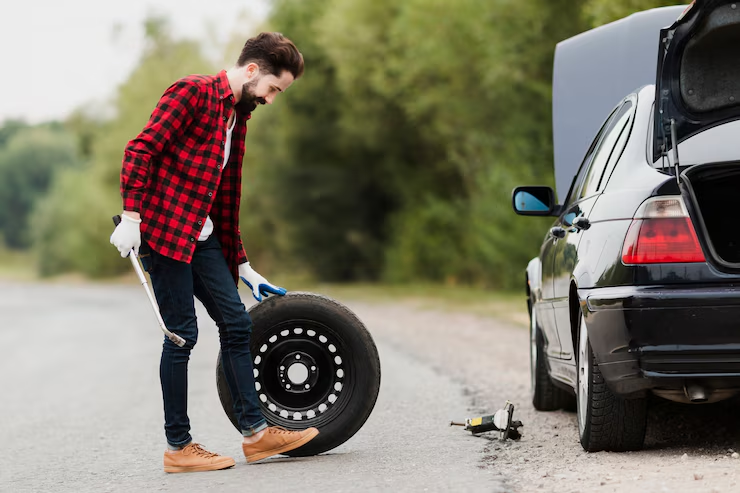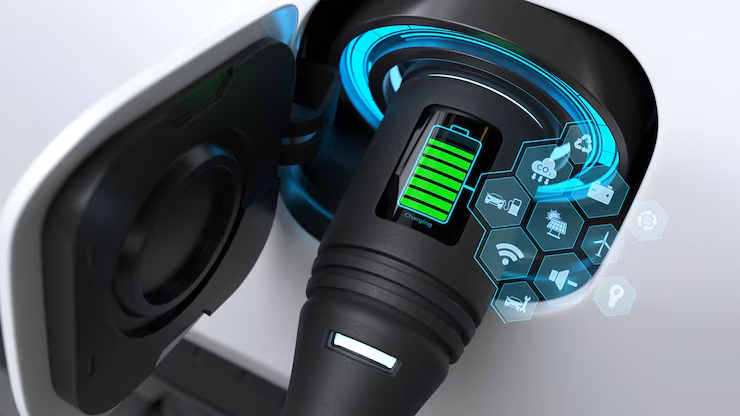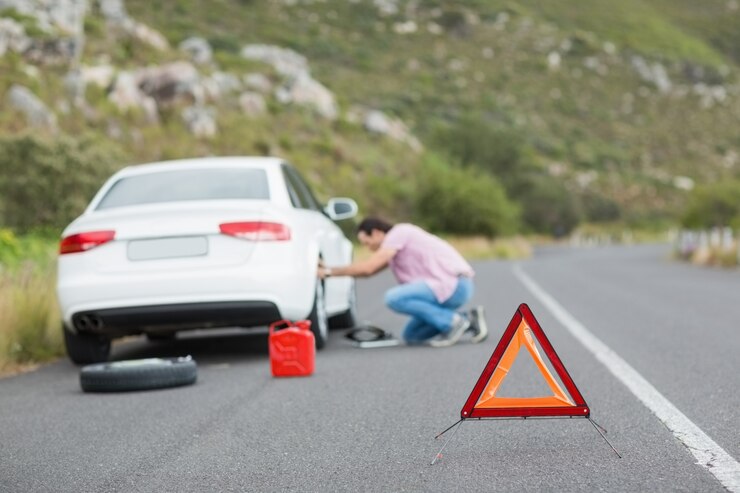introduction
Road safety is frequently discussed in relation to infrastructure traffic regulations and driver conduct. The Role And Function of Vehicle Maintenance in Road Safety. Despite the fact that these are unquestionably significant the state of the car itself is sometimes disregarded. Maintaining a vehicle is essential to road safety.A well kept car reacts more quickly is more reliable in an emergency and has a lower chance of mechanical issues that could cause collisions.
Ignoring auto maintenance can result in hazardous circumstances that put the driver passengers and other drivers on the road in danger.It’s not just about avoiding expensive repairs.Poor car maintenance contributes significantly to traffic accidents all over the world from tire blowouts and brake failures to engine overheating and steering problems.
In this comprehensive article, we’ll explore the essential aspects of vehicle maintenance that directly impact road safety. We’ll also provide practical tips for keeping your car in roadworthy condition and discuss how preventive care can save both lives and money in the long run.
Vehicle Maintenance Is Essential for Road Safety
Every vehicle regardless of make or model is subject to wear and tear.Over time components degrade due to usage, environmental exposure and aging.If these components aren’t regularly checked and maintained the likelihood of mechanical failure increases.
Poorly maintained vehicles can
- Lose control in critical moments
- Experience unexpected breakdowns on busy roads
- Cause collisions due to malfunctioning lights or brakes
- Fail to react properly in emergency situations
Routine maintenance ensures that your vehicle remains reliable and safe providing better handling, improved braking, and consistent performance.Just as a pilot wouldn’t fly without a pre-flight inspection drivers should never underestimate the importance of regular car checks.
Maintaining your tires is essential to driving safely.

As the sole component of a car that comes into direct touch with the road tires are essential to safe driving. Reduced traction, longer stopping distances, and an increased danger of blowouts can all result from worn out underinflated or overinflated tires.
Crucial elements of tire care consist of
Tread depth: Having enough tread keeps you firmly in place especially when it’s raining.Tires should be replaced if the tread depth is less than 2/32 of an inch.
Tire pressure: Check pressure monthly.Underinflated tires can overheat overinflated ones reduce grip.
Alignment and rotation: Misaligned wheels and uneven wear affect handling.Rotate tires every 5000 to 7500 miles.
Seasonal adjustments:Use winter tires in snow prone areas for better performance and safety.
Keeping your tires in optimal condition enhances stability improves fuel efficiency and most importantly, saves lives.
Braking System The First Line of Defense
Your brakes are arguably the most important safety feature in your vehicle.Without an effective braking system you can’t stop in time to avoid hazards.Signs of brake trouble like squeaking noises, vibrations or increased stopping distances should never be ignored.
Essential brake maintenance tips
Brake pads: Inspect and replace them when worn. Most last 30,000–70,000 miles depending on usage.
Brake fluid: Replace every 2–3 years or as recommended. Contaminated fluid can reduce brake performance.
Rotors and drums: Check for warping or grooves which can impair braking.
Warning signs: Any changes in brake feel or response should be checked immediately and take action.
Visibility and Lights Perceiving and Being Perceived
Visibility depends on turn signals, brake lights, headlights and taillights. They make it easier for you to see the road and let other drivers know what you’ll do.Accidents can be caused by dim or broken lights particularly at night or in bad weather.
Essentials of lighting maintenance:
Headlights: Replace bulbs when necessary and clean lenses on a regular basis.
Brake and signal lights: Make sure all the lights are operational by checking with a friend or using a reflective surface.
In some driving situations, fog lights and reverse lights are essential but frequently disregarded.
Driving safety is greatly increased by neat, efficient lighting systems, particularly in low-visibility conditions.
Control and Stability in Steering and Suspension
Road shocks are absorbed and control is maintained by the steering and suspension systems. Your car may become challenging to drive if these systems are impaired particularly when turning or going over rough terrain.
Indications of issues with the suspension or steering
- Pulling to one side
- Bouncing over bumps excessively
- Steering difficulties or strange sounds
Regular maintenance and inspections, including as alignment, shock absorber testing, and fluid checks, are essential. They guarantee that your car reacts predictably and stays safe and comfortable to drive.
Engine and Gearbox The Vehicle Heart
Engine and transmission problems can result in unexpected breakdowns, stalling, or power loss, all of which can be quite dangerous in traffic, even though they are not usually directly related to collision avoidance.
Preventive actions
- Maintaining proper coolant levels keeps the engine from overheating.
- For seamless gear changes, transmission fluid is essential. As directed by the manufacturer, replace.
- Warning lights should never be disregarded as they may indicate major issues.
Health of Batteries Energy When You Need It Most

Everything in your automobile including the infotainment system, lighting, and ignition is powered by the battery.
Tips for maintaining batteries
- Check the voltage of the battery. This is typically done for free by car shops.
- Replace every three to five years. Battery life is shortened by cold temperatures.
- Keep an ear out for a slow engine crank. It can be a sign of a dead battery.
Clear vision saves lives with windshield wipers and fluid.
For safe driving visibility is crucial. When it rains or snows worn wipers or an empty washer reservoir can constitute a major problem.
Advice on maintenance
- Empty the windshield washer fluid.In the winter use anti-freeze washer fluid.
- Look for cracks in the windshield.In cold weather even little chips can deteriorate or impair vision.
Emissions and the Exhaust System Safety and Health
The exhaust system is crucial to overall safety even if it has no direct impact on handling or braking. Car cabin leaks can let dangerous chemicals like carbon monoxide in.
Safety measures
Keep an ear out for odd sounds. Loud exhaust or rattling could be signs of trouble.
Look for any holes or leaks. In older cars, rust is a common issue.
Important lights to watch
- Check Engine Light
- Oil Pressure Warning
- Brake System Alert
- ABS Warning Light
Understanding and responding to these indicators promptly can prevent more costly and dangerous — issues down the road.
The Financial and Legal Consequences of Poor Maintenance
Neglecting vehicle maintenance doesn’t just endanger lives it can also result in financial and legal trouble. Accidents caused by mechanical failure can lead to liability lawsuits, insurance claim denials and even criminal charges in extreme cases.
Potential consequences
- Fines or failed inspections for unsafe vehicles
- Higher insurance premiums after accidents
- Out-of-pocket costs for damage or injury
- Legal responsibility if your car is deemed unfit for the road
- Regular maintenance is an investment in your safety, your finances, and your peace of mind.
Schedule for Preventive Maintenance A Lifesaving Practice
One of the best strategies to guarantee road safety is to adhere to a regular maintenance program.Every vehicle has a recommended maintenance schedule from the manufacturer which is usually located in the owner’s manual.
General intervals to keep in mind
Every 3,500–7,500 miles, change the oil.
Rotate tires every 6,000 miles.
Inspection of the brakes: every 10,000–20,000 kilometers
Test the battery every six to twelve months.
Complete examination: Every year or more
By following this routine, you can drive your car with confidence and security.
Promoting a Maintenance Culture
More than just human effort is needed to create safer roads; a culture shift that views car upkeep as necessary rather than optional is also necessary.
encourage a culture of car safety:
- Learning: Include the fundamentals of maintenance in driver’s education.
- Incentives: Discounts may be provided by insurance carriers in exchange for evidence of consistent maintenance.
- Public awareness: Government initiatives can draw attention to the connection between safety and upkeep.
- Fleet standards: Businesses ought to establish stringent maintenance schedules for their commercial vehicles.
Everyone’s safety on our roadways will increase as more individuals prioritize maintenance.
conclusion
There is no denying the link between road safety and car maintenance. Safe roads and appropriate driving practices are important but they are useless if your car isn’t roadworthy. An everyday journey might quickly become life threatening due to a blown tire faulty brake or damaged headlight.
Maintaining your automobile on a regular basis keeps it in top shape to handle emergencies adjust to changing road conditions and steer clear of avoidable collisions.It’s a duty to yourself your passengers, and all other road users, not just a responsibility.
Ultimately, driving safely begins even before you crank the ignition. Everyone will be safer on the roads if you prioritize upkeep.

